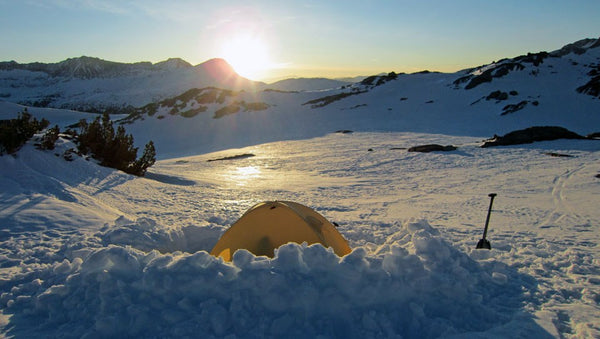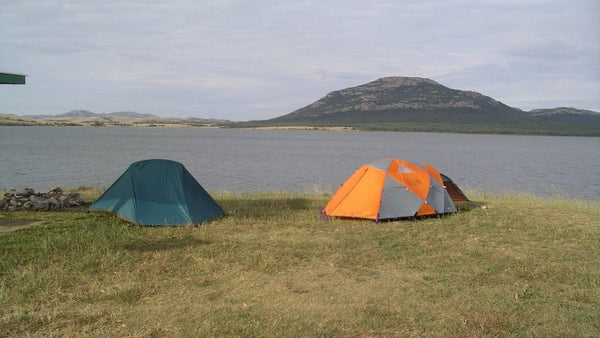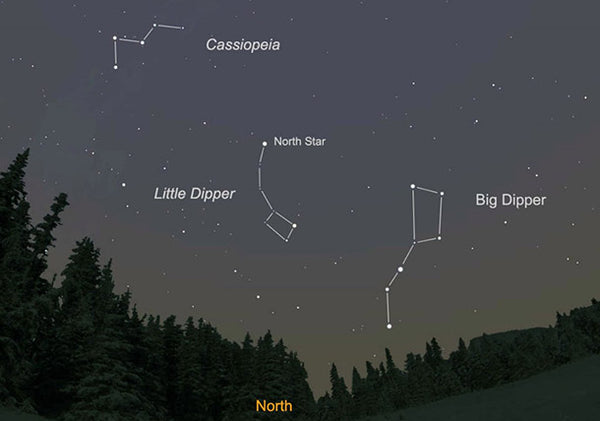LNT Tips: Hiking, Camping, Canoeing
So you’ve reviewed the seven principles of Leave No Trace ethics (to reiterate, these are: plan ahead and prepare, travel and camp on durable surfaces, dispose of waste properly, leave what you find, minimize campfire impacts, respect wildlife, and be considerate of other visitors) and you understand how following them is extremely beneficial to natural environments and the people (like you) who enjoy them. Even after you know and understand the LNT principles, though, enacting them can sometimes be tricky – different activities have different potential impacts on the environment, so your primary LNT considerations will vary depending on how and where you’re recreating. This activity-specific list of practical LNT tips will help you to minimize your impact no matter how you play outside. Here’s one tip upfront: in reading on, you’re already following the first principle – increasing your familiarity with LNT practices is an important part of planning and preparing! Give yourself a quick pat on the back, and then keep on learning how to reduce your impact.
LNT tips: Hiking
Wear Proper Footwear. LNT-wise, this is one of the most important and often overlooked pieces of basic hiking preparation. Proper footwear means boots that are sturdy, high-topped, and capable of trucking through mud and puddles without soaking your toes. Not only will this keep you safe and healthy, but it will also likely protect the trail and surrounding area as well. Because another LNT hiking basic is to –
Stay On The Trail. That patch of wildflowers just a couple yards off might look like a great place for a picnic, and blasting straight up instead of following a switchback might seem like a handy shortcut, but resist the temptation – the designated trail is the most durable surface for travel because it’s the only surface that’s intended for travelers. All the space off to the sides should be left alone and untrodden. Where one person tramples a new path, others are likely to follow, and this increases impact exponentially. For similar reasons, you should try to –
Stay In The Center Of The Trail whenever possible. Straying too often to the edges can widen the trail beyond the necessary extent. This is where proper footwear really comes in handy – people are most likely to forge new paths and widen the edges of trails in the process of avoiding muddy patches and puddles. If your boots make mud and moisture negligible, you’ll be able to stride right through them without an issue. More traffic circumventing a patch of mud means more footsteps on the edge of the trail (or beyond), which means making an extra physical impact that could have been avoided.
Avoid Pulling/Leaning On Trees adjacent to or even in the center of the trail. Especially in areas of heavy use/traffic. The repeated use of tree trunks/branches as handholds eventually rubs away their bark completely – smooth, glossy wood is a familiar sight to most people that have spent much time trekking up wooded mountainsides, but this condition is actually unhealthy for the trees, and can even kill them in some cases. Hikers should do the best they can to avoid contributing to this process. If holding onto a trunk or branch is necessary in order to avoid a nasty fall, then, by all means, you should protect yourself (though leaning on a personal walking stick or trekking pole would be preferable). But if it’s only a matter of convenience, grabbing trees should be avoided.
While hiking/bushwhacking in wilderness areas that do not include established trails, your considerations will be a bit different – instead of staying on a designated path, you’ll want to avoid creating a trail where there isn’t one. This means dispersing the group, avoiding walking in a single file, and staying away from places that appear to have recently seen travel. When possible, stick to surfaces like snow and rock where you won’t leave any lasting footprints.
LNT Tips: Camping
While accessing your campsite, be sure to follow the hiking protocol above, along with these tips specific to LNT camping:
Prepare to carry out more garbage than you’ll create. It’s easy to underestimate how much waste is created by aluminum cans and energy bar wrappers. Bring an extra garbage bag just in case. This will also be helpful if you encounter any garbage left by others; an unfortunate inevitability that’s nice to be able to correct. An extra stuff sack can sometimes be helpful for consolidating trash, especially if your pack is short on space.
Repackage Food Beforehand. The less waste you go in with, the less you’ll have to keep track of and carry out. Dispose of individual wrappings beforehand to reduce the amount of plastic and packaging you bring with you into the wilderness.
Camp At Established Sites. “The best campsites are found, not made” is an important LNT mantra. Sticking to sites that are already extant reduces the total area impacted by human usage. Try to keep your camp as consolidated as possible to avoid increasing the size of the site you’re occupying, and leave the site just as you found it. And make sure you’re never camping within 200 feet of a water source, even if it looks like others have done so.
Build Fires Responsibly. Minimizing campfire impacts is a protocol of its own for a reason – irresponsible fire tending can have drastic consequences for the environment. At worst, you might start a forest fire, which is just about the largest trace a single party can possibly leave in their wake. To reduce your impact, only ignite fires in established rings, or build a mound fire. Or even better – if you have a stove and ample fuel, consider sticking to those instead. Keep the size of any fires you do build minimal, make sure you let them burn out completely until the ashes are cool, and always douse and disperse ashes before leaving camp. And of course, know and follow any local fire protocols that may be in place. If you only plan on using a fire as a light source (as opposed to a heat source or cook fire), you might consider bringing along some candles as a quick and easy substitute.
Keep It Down. Be considerate of others who might be camping in the area by keeping your volume respectful. Just because you haven’t seen anybody else, doesn’t mean they aren’t around.
LNT Tips: Canoeing/Canoe Tripping
Keep Your Canoe Clean. Wash the inside and outside of your canoe before you launch at the put-in and after your trip is complete. Additionally, check to make sure no organic matter is stuck to the bottom or inside of your boat at the beginning of a portage. This prevents the spread of invasive species, which are particularly easy to transport to and from riparian settings.
Avoid Crushing Aquatic Vegetation. Don’t steamroll through the reeds just for fun – stick to the open water. Pull your canoe up on sandy and rocky shores in lieu of vegetated banks or areas which might be particularly vulnerable to erosion.
Camp At Least 200 Feet From The Water. This is a camping specific tip, but it is particularly easy to lose track of on canoe trips, where water is everywhere. Be particularly conscious of keeping cooking waste and human waste a safe distance away from the water.
Don’t Feed Fish/Birds. Refrain from dispersing breadcrumbs, etc. This is part of respecting wildlife and leaving local ecosystems in their natural state.
Be Extra Careful Of Your Volume – noises and voices carry clearly over water. Take extra care to ensure you aren’t adding unnecessary pollution to the natural soundscape.
Pack Out Human Waste. If you aren’t camping at a maintained site with bathroom facilities, use a WAG bag to ensure that waste stays away from the water.
If you have any of your own unique methods of reducing your impact, share them in the comments – the more public awareness of good LNT practices, the better for the natural world and all of us who wish to protect it.
Leave a comment
Comments will be approved before showing up.
Also in News & Skills




Richard White II
Author